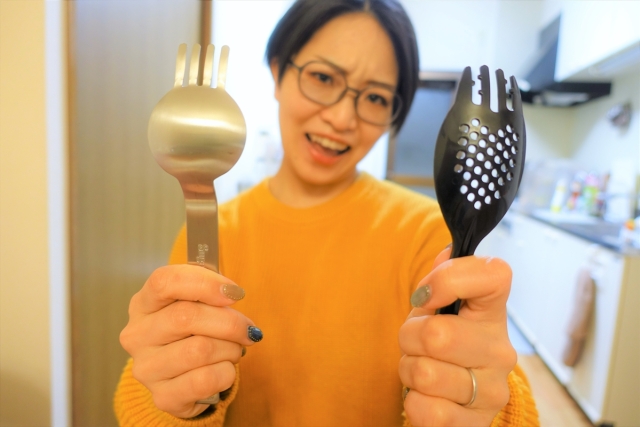
High-performance spork action.
Spork innovation has been advancing at a steady pace. Prototypes date back to the latter half of the 19th century and it’s design was revolutionized by the ramen chain Sugakiya in the latter half of the 20th century. Sadly, “steady” does not equal “rapid,” but when it comes to sporks the phrase “if it ain’t broke don’t fix it” surely applies.
However, now at 100-yen store Daiso, the Scoon may very well be the next evolution in spork technology, and half a century early! At only 110 yen (US$0.95) after tax, its value is matched only by the mystery of why it’s called “Scoon.”
My best guess is that it’s a rather freewheeling portmanteau of “spoon” and “cup noodle,” because the package explains that it is ideal for the close quarters of instant ramen with its serrated prongs and perforated spoon section. It was also created by Kokubo Kogyo, a company that has earned its stripes in the 100-yen game with a line of quality products at rock-bottom prices.
Scoon certainly has a lot going for it, but to really earn its stripes, it’ll have to go toe to toe with the old guard: the Sugakiya spork.
▼ Scoon (left), Sugakiya spork (right)
By positioning the prongs on the exterior of the spoon rather than interior, the Sugakiya spork achieved a totally new level of balance between soup and noodle. For completely changing the way ramen is sporked, this utensil even earned the acclaim of the Museum of Modern Art in New York City.
Epoch-making utensils don’t come cheap, however, and an official Sugakiya spork costs 1,980 yen (US$17) after tax. That might be more than many are willing to spend on sporks, so the question our reporter Haruka Takagi is setting out to answer is if the Scoon provides a cost effective – or dare we say better – ramen experience than the Sugakiya spork.
This was sure to be a raging hot battle, so Haruka prepared an instant cup of raging hot ramen from the famous Mokotanmen Nakamoto chain.
The tension in her kitchen became excruciating during the soup’s mandatory three-minute soak, as the two spork challengers coldly stared each other down.
The defending champion was allowed to go first and Haruka took a big dip with it into the paper cauldron of capsicum. Unsurprisingly, the champ fished out a hearty clump of noodles for her to feast on.
And after that she was able to skim a veritable abyss of crimson soup with the Sugakiya spork’s securely concave surface.
Because of that, the full force of Mokotanmen Nakamoto’s spicy ramen hit her square in the VR1 receptors. It was a spine-tingling blend of agony and ecstasy.
▼ Haruka: “Oooooh”
The Sugakiya spork wasn’t without its faults, however. It was rather heavy for a utensil and can cause an unpleasant sensation when hitting the teeth for some people. If she had to be completely honest, it could stand to hold more soup per scoop too.
So, the stage was set for Scoon to impress, and impress it did with an even more bountiful haul of noodles!
Haruka was afraid that they would slip off the Scoon’s plastic prongs, but the serrated edges held strong and steady for a very comfortable eating experience.
It was at this time that she realized a critical mistake that she had made. One of the Scoon’s strong points was its perforated bottom, which might look like a disadvantage at first, but actually enables it to pick up those tricky, tiny toppings like cabbage and mystery meat that often elude our grasp and end up at the bottom. If a spoon such as the one on the Sugakiya spork were to attempt to scoop up such tasty debris, it would likely float on the surface and easily spill back out with the slightest jostle. This problem is solved with Scoon because as the broth drains through the holes it pulls those topping down with it. Those same toppings then fill the holes which would hold the broth in place as well.
This is how it should work in theory, but the Mokotanmen Nakamoto cup ramen, while delicious, was very light on such small items and didn’t give Scoon a chance to shine like a Cup Noodle might have. We shouldn’t hold that against Scoon though, and ought to give it credit for that feature.
So, throughout the first half of the cup ramen, Sugakiya spork and Scoon were pretty much neck and neck in terms of overall performance. However, as Haruka approached the bottom of the cup a clear winner had emerged.
It appeared as though the shorter handle and longer scooping part of the Scoon made it very hard to pick anything up from the lower half of the cup.
The Sugakiya spork, on the other hand, continued to deliver hearty spoonfuls and forkfuls of ramen well into the cup’s twilight moments.
And that was the end of this match up, The Sugakiya spork’s acclaimed designed won the day once again. With its short but effective prongs and ergonomic design it provided the better ramen experience hands down.
However, Scoon held its own incredibly well and at nearly one-twentieth of the cost. Haruka was also left wondering if the result wouldn’t have gone a different way had Scoon be given the chance to shine with a more topping heavy ramen.
Scoon definitely brought some important innovations to sporks, but in the end may need some fine tuning to become the next chapter in the technology. Luckily, they still have another 40 or 50 years to get it sorted out.
Photos ©SoraNews24
● Want to hear about SoraNews24’s latest articles as soon as they’re published? Follow us on Facebook and Twitter!
[ Read in Japanese ]

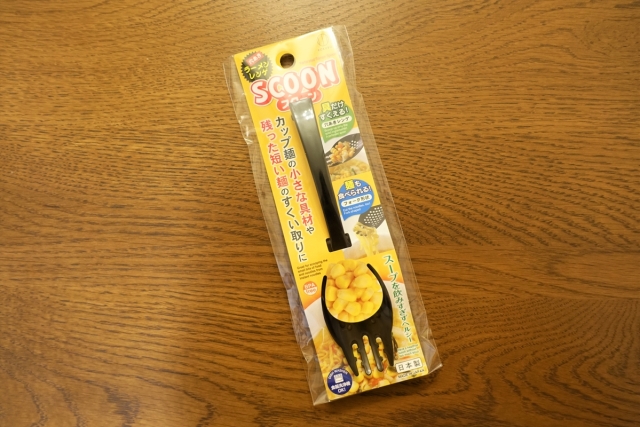
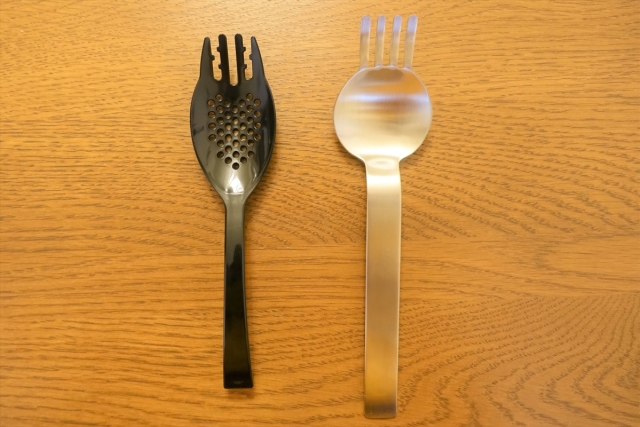
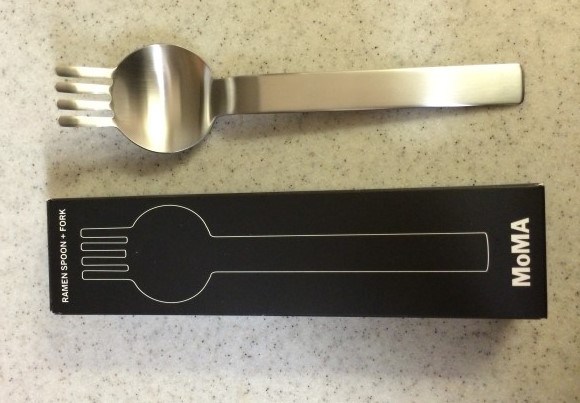
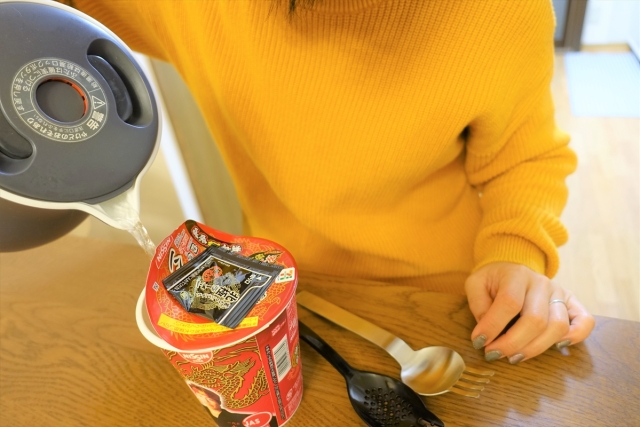
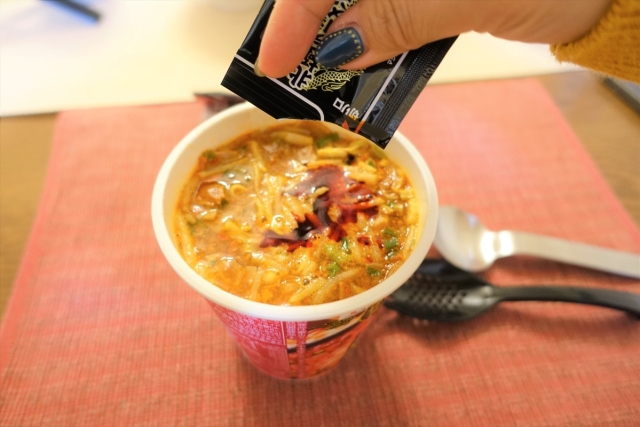
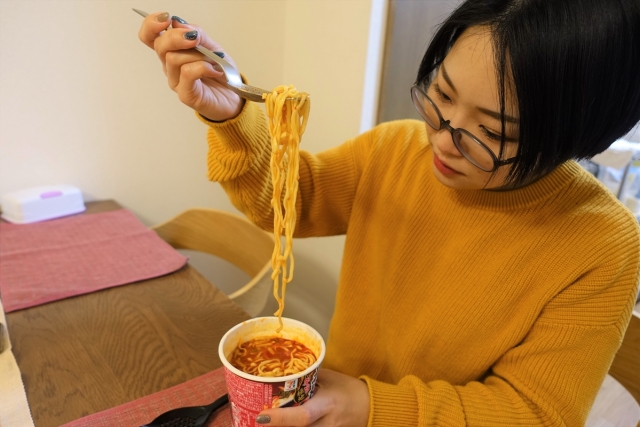
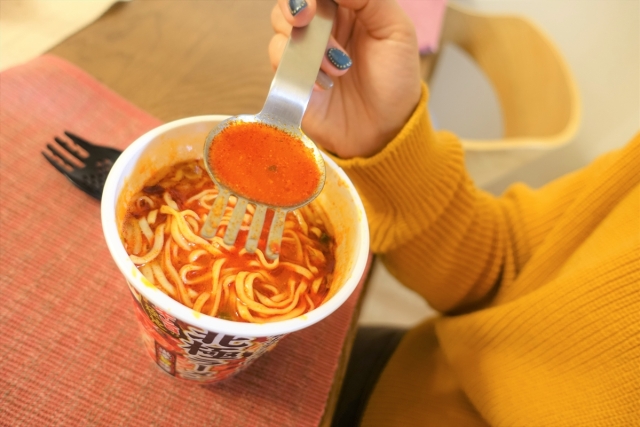

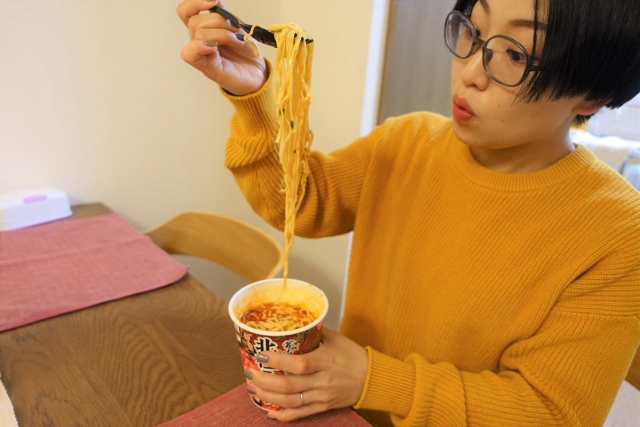
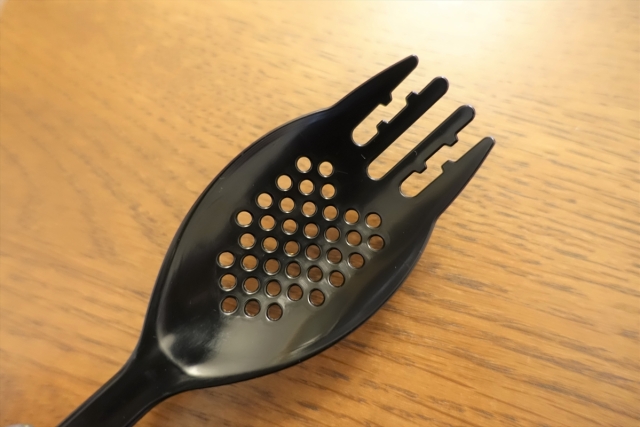

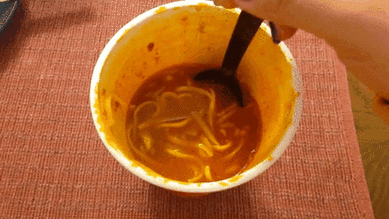

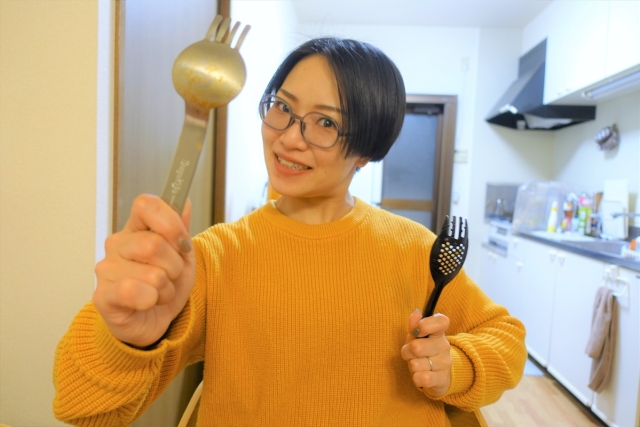
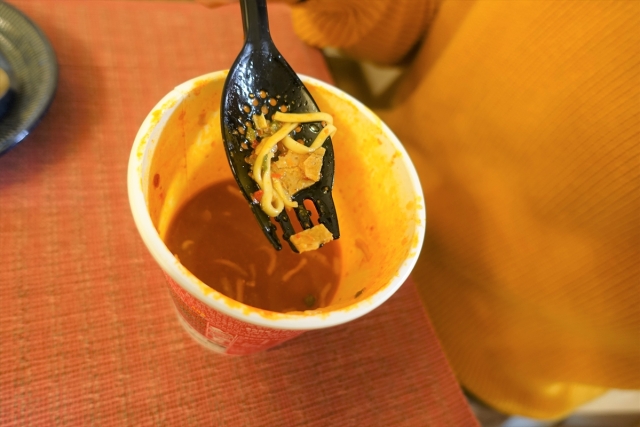
 Japanese radio host arrested after beating female co-host with microphone during live broadcast
Japanese radio host arrested after beating female co-host with microphone during live broadcast Cup Noodle vs 7-Eleven! We test their new scorching instant ramen cups to see who beats at heat
Cup Noodle vs 7-Eleven! We test their new scorching instant ramen cups to see who beats at heat Visit a pepper-packed tribute to spiciness tucked away in an Osaka food court
Visit a pepper-packed tribute to spiciness tucked away in an Osaka food court Tokyo’s new frozen ramen vending machines are brain-breakingly amazing【Taste test】
Tokyo’s new frozen ramen vending machines are brain-breakingly amazing【Taste test】 Daiso vs. Seria: Which sells the better egg white whipper? We find out【SoraKitchen】
Daiso vs. Seria: Which sells the better egg white whipper? We find out【SoraKitchen】 McDonald’s new Happy Meals offer up cute and practical Sanrio lifestyle goods
McDonald’s new Happy Meals offer up cute and practical Sanrio lifestyle goods Studio Ghibli glasses cases let anime characters keep an eye on your spectacles
Studio Ghibli glasses cases let anime characters keep an eye on your spectacles Super Nintendo World expansion gets delayed for several months at Universal Studios Japan
Super Nintendo World expansion gets delayed for several months at Universal Studios Japan All-you-can-drink Starbucks and amazing views part of Tokyo’s new 170 meter-high sky lounge
All-you-can-drink Starbucks and amazing views part of Tokyo’s new 170 meter-high sky lounge More foreign tourists than ever before in history visited Japan last month
More foreign tourists than ever before in history visited Japan last month Kyoto’s 100 Demons yokai monster parade returns!
Kyoto’s 100 Demons yokai monster parade returns!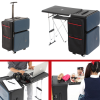 Rolling suitcase with built-in desk is perfect for mobile businesspeople and cosplayers alike
Rolling suitcase with built-in desk is perfect for mobile businesspeople and cosplayers alike Tokyo’s most famous arcade announces price increase, fans don’t seem to mind at all
Tokyo’s most famous arcade announces price increase, fans don’t seem to mind at all Four Japanese women chosen for world’s 100 most beautiful faces, four men make handsome list
Four Japanese women chosen for world’s 100 most beautiful faces, four men make handsome list Comparing two Starbucks fukubukuro shows just how different lucky bags can be
Comparing two Starbucks fukubukuro shows just how different lucky bags can be Disney princesses get official manga makeovers for Manga Princess Cafe opening in Tokyo
Disney princesses get official manga makeovers for Manga Princess Cafe opening in Tokyo Starbucks reopens at Shibuya Scramble Crossing with new look and design concept
Starbucks reopens at Shibuya Scramble Crossing with new look and design concept Beautiful new Final Fantasy T-shirt collection on the way from Uniqlo【Photos】
Beautiful new Final Fantasy T-shirt collection on the way from Uniqlo【Photos】 Is the new Shinkansen Train Desk ticket worth it?
Is the new Shinkansen Train Desk ticket worth it? Foreign English teachers in Japan pick their favorite Japanese-language phrases【Survey】
Foreign English teachers in Japan pick their favorite Japanese-language phrases【Survey】 Japanese convenience store packs a whole bento into an onigiri rice ball
Japanese convenience store packs a whole bento into an onigiri rice ball We try out “Chan Ramen”, an underground type of ramen popular in the ramen community
We try out “Chan Ramen”, an underground type of ramen popular in the ramen community Studio Ghibli releases Kiki’s Delivery Service chocolate cake pouches in Japan
Studio Ghibli releases Kiki’s Delivery Service chocolate cake pouches in Japan Japan’s bone-breaking and record-breaking roller coaster is permanently shutting down
Japan’s bone-breaking and record-breaking roller coaster is permanently shutting down New definition of “Japanese whiskey” goes into effect to prevent fakes from fooling overseas buyers
New definition of “Japanese whiskey” goes into effect to prevent fakes from fooling overseas buyers Our Japanese reporter visits Costco in the U.S., finds super American and very Japanese things
Our Japanese reporter visits Costco in the U.S., finds super American and very Japanese things Studio Ghibli unveils Mother’s Day gift set that captures the love in My Neighbour Totoro
Studio Ghibli unveils Mother’s Day gift set that captures the love in My Neighbour Totoro Foreign passenger shoves conductor on one of the last full runs for Japan’s Thunderbird train
Foreign passenger shoves conductor on one of the last full runs for Japan’s Thunderbird train Domino’s Japan now sells…pizza ears?
Domino’s Japan now sells…pizza ears? New Japanese KitKat flavour stars Sanrio characters, including Hello Kitty
New Japanese KitKat flavour stars Sanrio characters, including Hello Kitty Kyoto creates new for-tourist buses to address overtourism with higher prices, faster rides
Kyoto creates new for-tourist buses to address overtourism with higher prices, faster rides Sales of Japan’s most convenient train ticket/shopping payment cards suspended indefinitely
Sales of Japan’s most convenient train ticket/shopping payment cards suspended indefinitely Sold-out Studio Ghibli desktop humidifiers are back so Totoro can help you through the dry season
Sold-out Studio Ghibli desktop humidifiers are back so Totoro can help you through the dry season Japanese government to make first change to romanization spelling rules since the 1950s
Japanese government to make first change to romanization spelling rules since the 1950s Ghibli founders Toshio Suzuki and Hayao Miyazaki contribute to Japanese whisky Totoro label design
Ghibli founders Toshio Suzuki and Hayao Miyazaki contribute to Japanese whisky Totoro label design Doraemon found buried at sea as scene from 1993 anime becomes real life【Photos】
Doraemon found buried at sea as scene from 1993 anime becomes real life【Photos】 Tokyo’s most famous Starbucks is closed
Tokyo’s most famous Starbucks is closed One Piece characters’ nationalities revealed, but fans have mixed opinions
One Piece characters’ nationalities revealed, but fans have mixed opinions We asked a Uniqlo employee what four things we should buy and their suggestions didn’t disappoint
We asked a Uniqlo employee what four things we should buy and their suggestions didn’t disappoint Princesses, fruits, and blacksmiths: Study reveals the 30 most unusual family names in Japan
Princesses, fruits, and blacksmiths: Study reveals the 30 most unusual family names in Japan New instant ramen from Acecook really puts the “carb” in “carbonara”
New instant ramen from Acecook really puts the “carb” in “carbonara” Have you tried Tokushima ramen? No? You should (says our obsessed Japanese-language reporter)
Have you tried Tokushima ramen? No? You should (says our obsessed Japanese-language reporter) Instant vs. Restaurant Ramen Project: Ippudo spicy miso tonkotsu battle【Taste test】
Instant vs. Restaurant Ramen Project: Ippudo spicy miso tonkotsu battle【Taste test】 Ban on free plastic forks and spoons drafted by Japan’s Ministry of Environment
Ban on free plastic forks and spoons drafted by Japan’s Ministry of Environment This London ramen restaurant’s super-strange ramen shocks our Japanese taste-tester
This London ramen restaurant’s super-strange ramen shocks our Japanese taste-tester We try Taiwan’s newest taste sensation: Pudding Ramen!
We try Taiwan’s newest taste sensation: Pudding Ramen! Mint chocolate tapioca ramen appears in Tokyo: Too much to handle or too good to believe?
Mint chocolate tapioca ramen appears in Tokyo: Too much to handle or too good to believe? Deep-fried ramen croquettes now exist in Japan, and we are all powerless to resist them
Deep-fried ramen croquettes now exist in Japan, and we are all powerless to resist them Vending machine noodle ice cream: A retro icon in Japan brings joy to a new generation
Vending machine noodle ice cream: A retro icon in Japan brings joy to a new generation Ramen-flavor shaved ice is coming to Tokyo just in time for the summer heat
Ramen-flavor shaved ice is coming to Tokyo just in time for the summer heat Sea urchin ramen – Not for the faint of heart!
Sea urchin ramen – Not for the faint of heart! 348-year-old sake brewery’s newest creation: A special sake just to drink with ramen!
348-year-old sake brewery’s newest creation: A special sake just to drink with ramen! Ippudo serves up plant-based tonkotsu ramen in Japan for a limited time
Ippudo serves up plant-based tonkotsu ramen in Japan for a limited time Takeout ramen broth: A new Tokyo winter noodle trend that’s worth the hype? 【Taste Test】
Takeout ramen broth: A new Tokyo winter noodle trend that’s worth the hype? 【Taste Test】 We found a popular Japanese ramen chain in South Korea!…or so we thought
We found a popular Japanese ramen chain in South Korea!…or so we thought
Leave a Reply